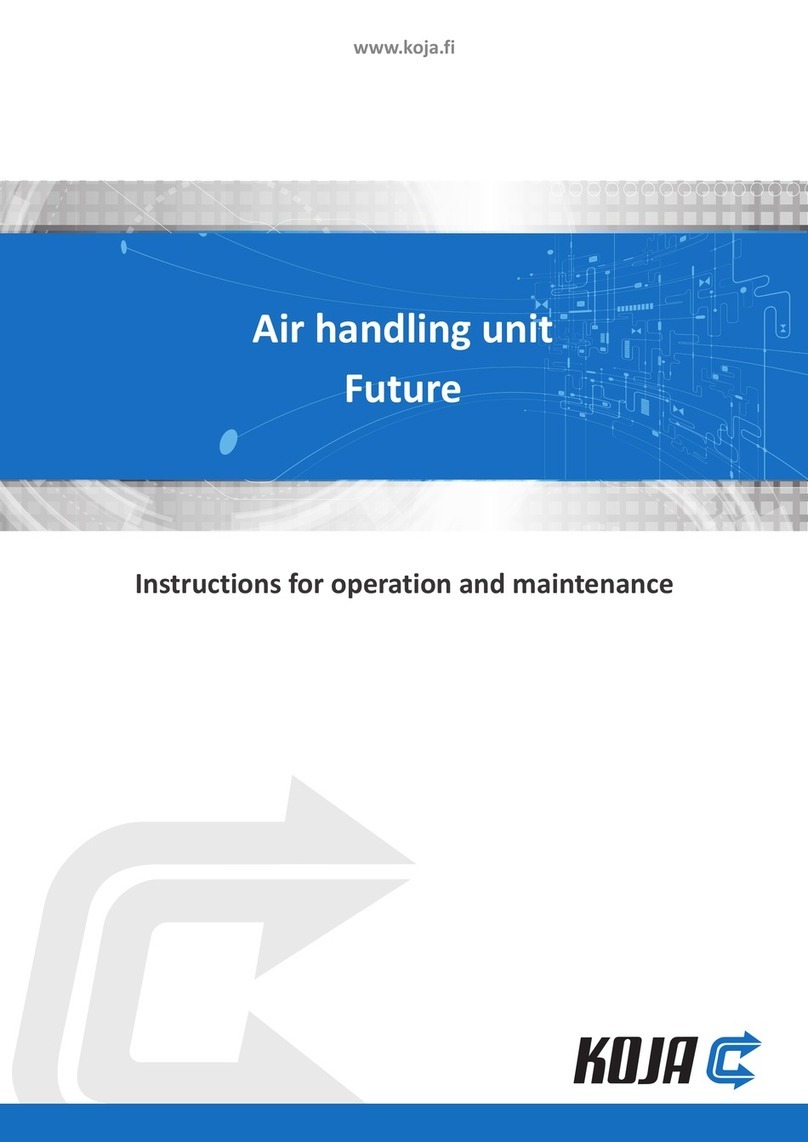
FUTURE® S AIR HANDLING UNIT
OPERATION AND MAINTENANCE
INSTRUCTIONS
15 December 2020 Ver 1.7 (We reserve the right to changes without prior notice) 1
CONTENTS
1 General ........................................................................................................................................................... 3
1.1 Operating conditions ............................................................................................................................... 3
1.2 CEN standard classification ..................................................................................................................... 3
1.3 Sound level .............................................................................................................................................. 3
1.4 General safety instructions...................................................................................................................... 3
1.4.1 CE marking........................................................................................................................................ 6
1.4.2 Fire .................................................................................................................................................... 6
1.5 Declaration of conformity ....................................................................................................................... 7
1.6 Recycling and disposal instructions......................................................................................................... 8
1.7 Future® S series equipment and product code key................................................................................. 9
2 Installing the unit.......................................................................................................................................... 11
2.1 Space reserved for the unit ................................................................................................................... 11
2.2 Unit components in general .................................................................................................................. 12
2.3 Location of duct outlets and handedness of equipment ...................................................................... 13
2.4 Commissioning general instructions ..................................................................................................... 14
2.5 Maintenance general instructions......................................................................................................... 15
3 Fans............................................................................................................................................................... 16
3.1 Operating conditions ............................................................................................................................. 16
3.2 Safety..................................................................................................................................................... 16
3.3 Commissioning ...................................................................................................................................... 16
3.4 Maintenance.......................................................................................................................................... 16
4 Filters ............................................................................................................................................................ 18
4.1 Operating conditions ............................................................................................................................. 18
4.2 Safety..................................................................................................................................................... 18
4.3 Installation and commissioning............................................................................................................. 18
4.4 Maintenance.......................................................................................................................................... 19
4.5 Replacement of filters ........................................................................................................................... 19
4.6 Replacement of gasket .......................................................................................................................... 20
5 Post-heating coil ........................................................................................................................................... 21
5.1 Operating conditions ............................................................................................................................. 21
5.2 Safety..................................................................................................................................................... 21
5.3 Installing ................................................................................................................................................ 21
5.4 Commissioning ...................................................................................................................................... 21
5.5 Maintenance.......................................................................................................................................... 22
6 Heat recovery section, plate......................................................................................................................... 23
6.1 Operating conditions ............................................................................................................................. 23




























